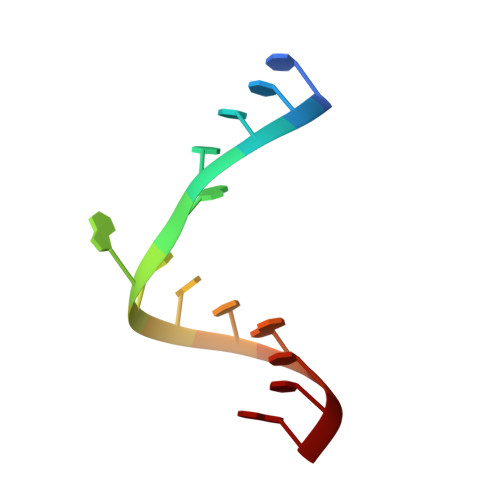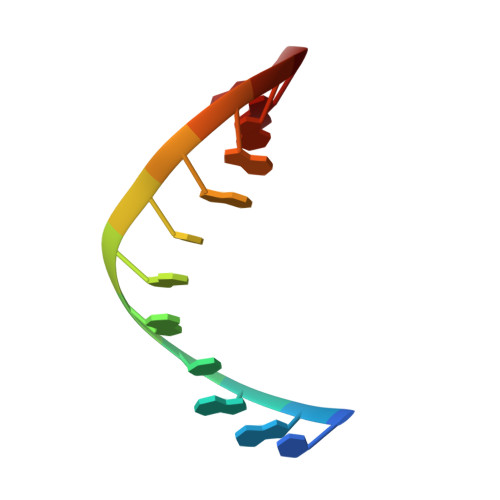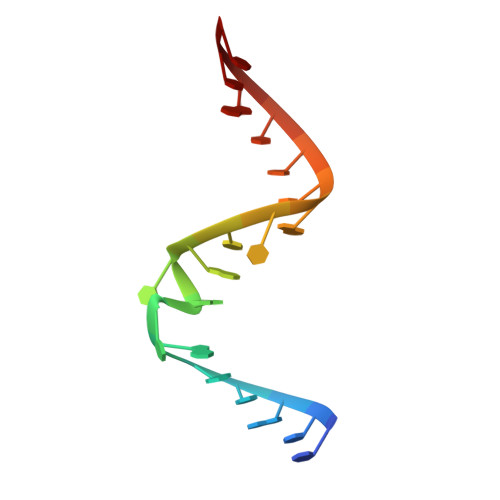Water in the Active Site of an All-RNA Hairpin Ribozyme and Effects of Gua8 Base Variants on the Geometry of Phosphoryl Transfer.
Salter, J., Krucinska, J., Alam, S., Grum-Tokars, V., Wedekind, J.E.(2006) Biochemistry 45: 686-700
- PubMed: 16411744
- DOI: https://doi.org/10.1021/bi051887k
- Primary Citation of Related Structures:
1ZFT, 1ZFV, 1ZFX, 2BCY, 2BCZ, 2FGP, 2OUE - PubMed Abstract:
The hairpin ribozyme requires functional group contributions from G8 to assist in phosphodiester bond cleavage. Previously, replacement of G8 by a series of nucleobase variants showed little effect on interdomain docking, but a 3-250-fold effect on catalysis. To identify G8 features that contribute to catalysis within the hairpin ribozyme active site, structures for five base variants were determined by X-ray crystallography in a resolution range between 2.3 and 2.7 A. For comparison, a native all-RNA "G8" hairpin ribozyme structure was refined to 2.05 A resolution. The native structure revealed a scissile bond angle (tau) of 158 degrees, which is close to the requisite 180 degrees "in-line" geometry. Mutations G8(inosine), G8(diaminopurine), G8(aminopurine), G8(adenosine), and G8(uridine) folded properly, but exhibited nonideal scissile bond geometries (tau ranging from 118 degrees to 93 degrees) that paralleled their diminished solution activities. A superposition ensemble of all structures, including a previously described hairpin ribozyme-vanadate complex, indicated the scissile bond can adopt a variety of conformations resulting from perturbation of the chemical environment and provided a rationale for how the exocyclic amine of nucleobase 8 promotes productive, in-line geometry. Changes at position 8 also caused variations in the A-1 sugar pucker. In this regard, variants A8 and U8 appeared to represent nonproductive ground states in which their 2'-OH groups mimicked the pro-R, nonbridging oxygen of the vanadate transition-state complex. Finally, the results indicated that ordered water molecules bind near the 2'-hydroxyl of A-1, lending support to the hypothesis that solvent may play an important role in the reaction.
Organizational Affiliation:
Department of Biochemistry and Biophysics, University of Rochester School of Medicine and Dentistry, Rochester, New York 14642, USA.



















